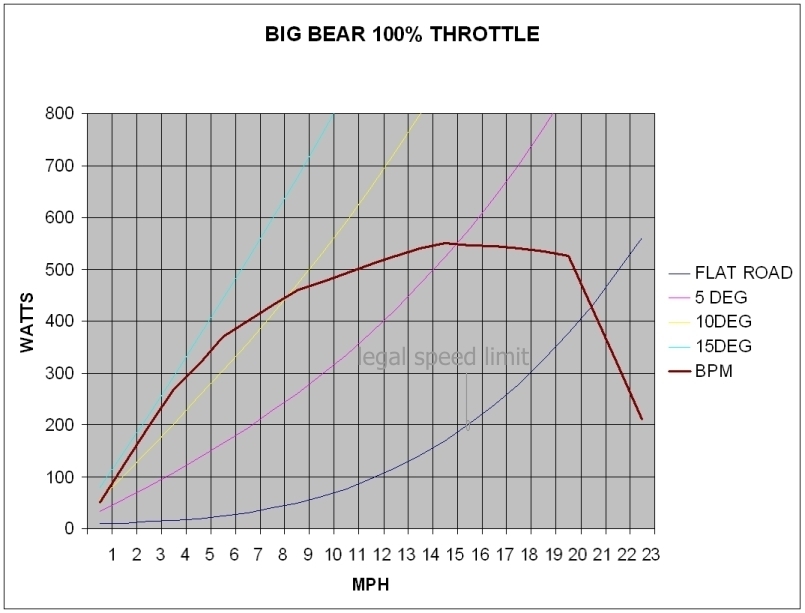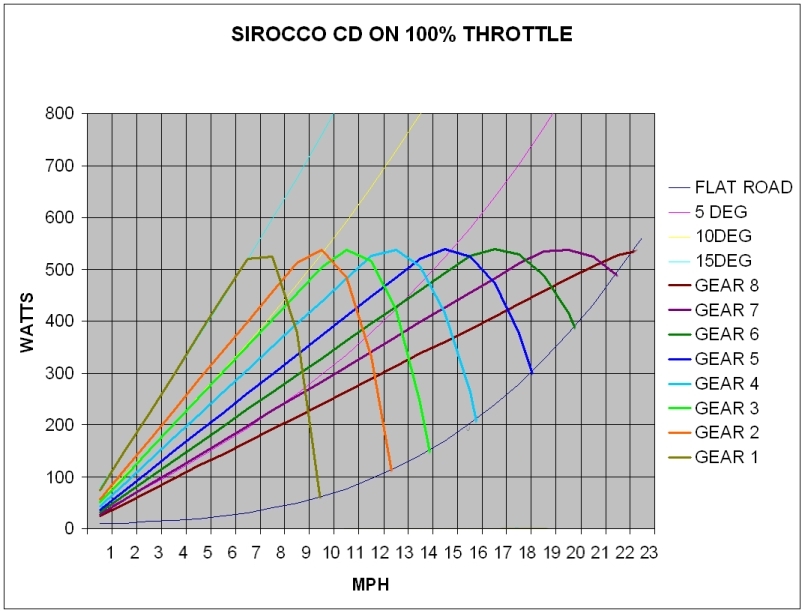Looks like it might have to be 3
Wondering if 3 different bikes could share 1 battery? So don't need to spend 1k plus on batteries, can only ride one bike at a time lol
Looks like it might have to be 3
This opens up a whole new avenue in ebikes just so many facets from the casual shopper on a 250w halfords special to off road monsters up to ??wyou cant put that motor on a normal bike frame mind its way to powerful for them it will twist it in half.
a 96v batt will cost a lot of money and weigh a ton as well.
http://www.ebay.co.uk/itm/E-Bike-Frame-bicycle-Frame-Steel-155mm-dropout-for-Stealth-Bomber-Electric-bike/162208414047?_trksid=p2047675.c100011.m1850&_trkparms=aid=222007&algo=SIC.MBE&ao=1&asc=38661&meid=80f2096723834fa2bcccc7468d5e31cf&pid=100011&rk=1&rkt=1&sd=162089077679
It gets really confusing as cranks are supposed to be better up the hills?The clunking is when the guy with the crank-motor keeps changing gear to try and get his motor at its maximum power, like you would on a small motorbike going up a steep hill. The hub-motor doesn't need to change gear because its power and torque are independent of gears. It's nothing to do with the type of crank-motor. they're all the same in that respect.
Normally, people stop pedalling or shut off the throttle to change gear with a crank-motor to try and mitigate the clunk, but you can't do that in a race up a steep hill because, you'd lose momentum.
There is so much misinformation on the internet and from so called reliable sources touting CD motors more efficient on hills, that's why the phrase included "Supposedly" as opposed to "Are"You need to read back over everything I said about efficiency. All motors have close to zero efficiency at zero speed. That test was done at a very low speed, so the hub-motor's efficiency would be severely compromised.
Also, those large DD hub-motors are often chosen for high speed (about 40 mph). They sometimes have trouble starting, depending on what controller you have and whether it's running sensored or sensorless. Some need to be helped to start by pedalling.
The only thing that test shows is that some (well at least one) hub-motors might not be suitable for low-speed off-road riding. If the test were repeated with the same hub-motor, but the sensored 180 rpm version, it would probably have flipped the bike going up that hill.
I don't know why you said, "cranks are supposed to be better up the hills". This is a complete myth based on misunderstanding and bigotry.

@Andy88, It was Dave that said it.I don't know why you said, "cranks are supposed to be better up the hills". This is a complete myth based on misunderstanding and bigotry.
I've done side by side tests.
CDs gain on very steep hills because you can use low power to climb slowly when a HD will stall out, so CDs can be advantageous if you have a lot of steep hills.
Hello Andy,There is so much misinformation on the internet and from so called reliable sources touting CD motors more efficient on hills, that's why the phrase included "Supposedly" as opposed to "Are"


Very interesting. So how about BBSO2 Mid Coupled with a BPM on the front wheel, 2 x batteries, 2 controllers serving each motor independentally, then we have the best of both worlds? Or the bike would collapse?Hello Andy,
I agree with d8veh's statement 'All motors have close to zero efficiency at zero speed'.
However, you should consider the advantage of CD motors in extending their climbing ability.
The following image shows the power profile for the Woosh Big Bear (Bafang BPM motor, 36V 20A controller, 15AH Samsung cell battery). The red plot is the maximum mechanical output, between 0 to 23mph. The BPM is practically useless at below 3-4 mph and above 22mph, most input power from the battery is turned into heat. That's OK for most customers though, because the controller will cut out at 15 mph and it will still climb 10% gradient fairly well at about 8mph.

the following image shows the power profile for the Woosh Sirocco CD (2013, 15A controller, same 15AH battery).
It has 8-speed cassette at the rear (12T-34T) and 44T chainring. Instead of a single power output plot, you have one for each gear. So the mechanical output power depends on the selected gear.
The lowest gears (1 and 2) give clearly the CD a better efficiency at below 8mph. It can climb 10% gradient better, at around 10mph despite having less raw input than the Big Bear.
The Woosh Krieger has the same profile, just 20% more power.

I'm sure I saw him on an ebike the other day.As far as trying to trace threads back using Tapatalk, more chance of locating Lord Lucan.
The effective speed and acceleration range of the BBS02 is so wide (3mph to 30mph) that you won't improve the bike by adding a BPM (4mph-22mph) to a BBS02.Very interesting. So how about BBSO2 Mid Coupled with a BPM on the front wheel, 2 x batteries, 2 controllers serving each motor independentally, then we have the best of both worlds? Or the bike would collapse?
You will have a bike that is about 5-6 kg heavier than any other e-bike and it won't be street legal. The BBS has an internal controller already of course...Very interesting. So how about BBSO2 Mid Coupled with a BPM on the front wheel, 2 x batteries, 2 controllers serving each motor independentally, then we have the best of both worlds? Or the bike would collapse?
Sorry, I meant adding a BPM to a pre built Bosch Mid Drive effectively giving you a throttle on a branded CD bike.The effective speed and acceleration range of the BBS02 is so wide (3mph to 30mph) that you won't improve the bike by adding a BPM (4mph-22mph) to a BBS02.





